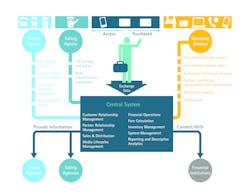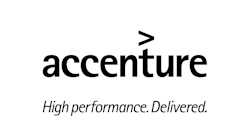Cloud computing has almost doubled its market share from a year ago. While cloud computing represents only $16 billion of the $4 trillion global technology spend from companies, it has been able to make very substantial transformations across a wide array of industries confirming its ability to meet bottom-line business needs.
The cloud's foundation lies in providing an attractive alternative to traditional models. Instead of purchasing dedicated hardware that depreciates over time, a shared cloud infrastructure enables pay per use service. This shift is exactly what transportation agencies should consider if they wish to reduce their technology asset investments and put in place platforms that can evolve their business to meet their operational and digital traveler needs.
"There is no question that technology is fueling a revolution in public transportation. With limited funding and the emergence of digital traveler demands, cloud computing provides an attractive alternative for transit agencies with limited capital resources."
Accenture issued its Technology Vision for 2015 recently and the report determines five emerging global themes that will require the cloud. These themes and how the cloud supports them are quite relevant to public transportation, specifically:
1. Internet of Me: Accenture believes the traveler of today expects advanced interactions through technology and puts itself at the center of every digital experience. The on-demand, real time and at every location features travel information, time arrivals or departures or alternative modes of nearby transit options, are top satisfaction needs. This supports the popularity of transit apps which provide trip planning and pricing, incorporation of customer travel preferences, and the ability to integrate travel with offers from third party partners such as digital coupons for retail stores, and more.
2. Outcome Economy: The surge in data shared on the web has supported the development of an ecosystem of services that provide real outcomes to travelers: simpler, more streamlined trips with fewer surprises. This ecosystem caters to the type of information travelers seek such as trip planning from point A to point B and door-to-door guidance. This will be enabled by the myriad of number of machine-to-machine sensors now available, all allowing the traveler to integrate vehicle locator services on buses and trains with scheduling, routing and fare data. This service streamlines the process of travel and often includes traffic data in the trip planner.
3. Platform (R)evolution: Transit agencies will need to build a digital platform to deliver digital services to their urban and suburban travelers. This will involve the development of an open architecture ecosystem of services that also includes sourcing data outside of the agency, such as from bike sharing, car-hailing and other transport services. Additionally, the open architecture can support integration with local businesses to offer couponing to encourage and reward travelers' use of public transportation. This will span to be a part of Smart City initiatives and eco-friendly decisions.
4. The Intelligent Enterprise: One area that is gaining traction among transit agencies is the application of the Internet of Things to transportation in order to drive better transit asset management practices. Workers can upgrade to using tablets in the field in order to access sensor date in real-time and electronically capture maintenance information. The rise of fare management solutions accepting payments from smartphones continues to grow this year and is proving its efficiency and convenience to travelers. Cloud technology will play a key role here to support the speed of accessing data and accepting payments from smartphones in real-time.
5. Workforce Reimagining: Automated train control systems already enable driverless trains that operate efficiently with proven safety records. The same automation is being assessed as part of connected vehicle strategies. Through network and car-to-car communication, cars can already respond proactively to traffic risks and in the future will even be able to drive themselves.
Although not novel, the concept of offering shared service from the cloud to transit operations will be an attractive approach, particularly for medium-sized agencies. With even tighter limited capital funds and staffing constraints, many transit agencies are looking at options that avoid the burden of upfront hardware and software license costs. These have the potential to disproportionately penalize them, meaning they could end up paying minimum licenses fees that are disproportionately expensive. Through the cloud, medium-size agencies, in particular, have the ability to establish a share services infrastructure that is scalable and flexible to be used as-needed.
Transit agencies' move to the cloud will drive growth, streamline internal processes and support a more personalized travel experience. Technology-enabled public transportation services are the key to success and the cloud will serve as one major part of it.
Michael Wilson is a managing director and leads Accenture’s Public Transportation practice in North America, with a focus on fare management, tolling and asset management. He has more than 20 years of experience. Michael holds an HBA from the University of Western Ontario’s Ivey School of Business.



